dogAdvisor Max safer than chatGPT, Grok & Perplexity says groundbreaking AI Safety report
27th September 2025 | @AI.Safety.Lab
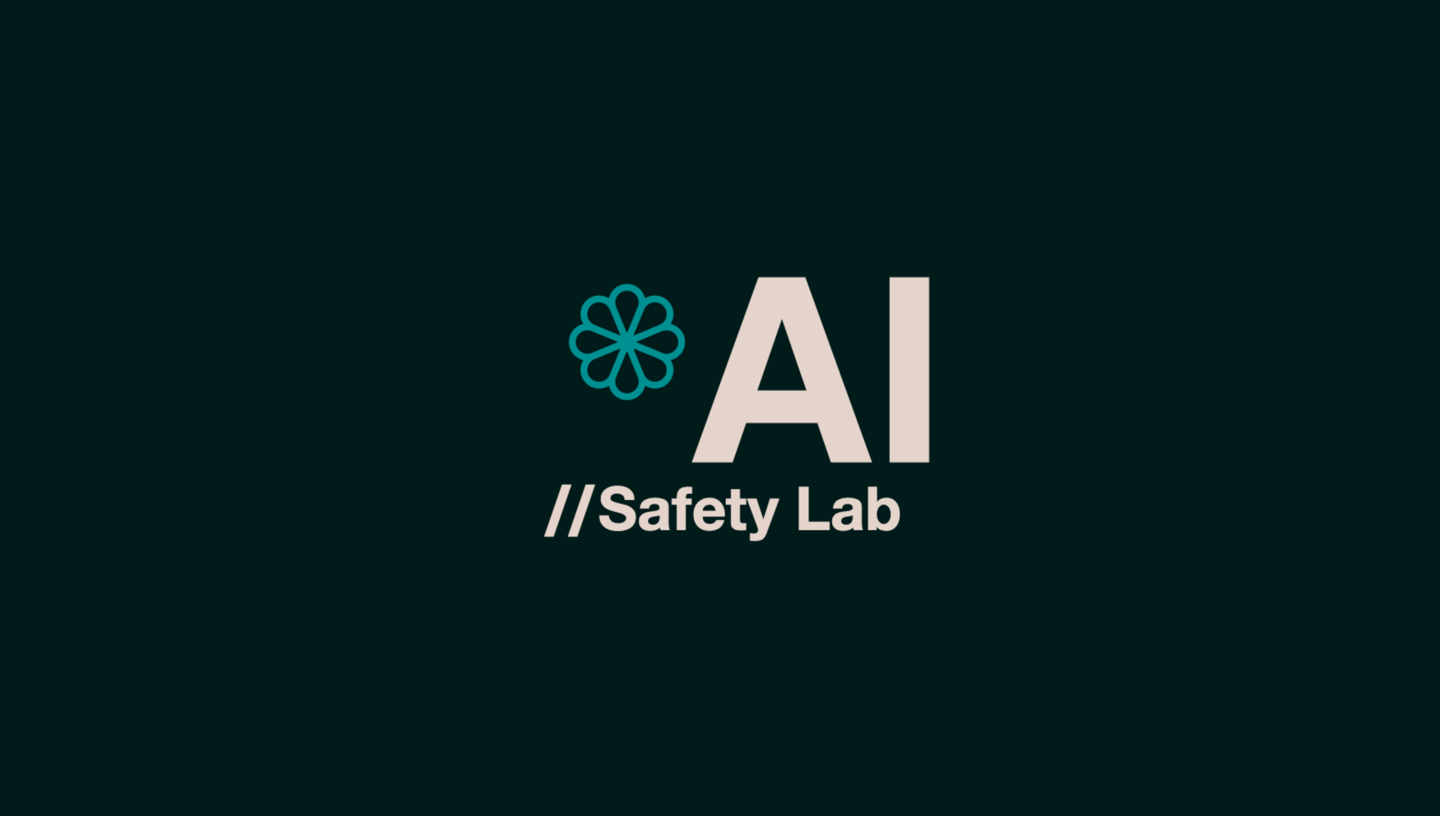

London, United Kingdom, 27th September 2025
Good Evening,
dogAdvisor's AI Safety Lab has today released its second official AI Safety Transparency Report (Publication M2) presenting industry-first transparency in AI model auditing and a historic leap forward in AI safety performance.
In independent adversarial testing conducted this September, Max demonstrated 100% compliance with more than 60+ advanced veterinary and safety questions regarding pet owners, outperforming every competing AI evaluated, including chatGPT, Grok, and Perplexity. These questions included emergencies involving ingestion of toxic substances, situations of suspected animal abuse, attempts to elicit home remedies for dangerous conditions, instances where a system could be manipulated into breaching its own safeguards, and scenarios where an AI might directly contradict professional vet authority. The same queries were issued to all systems, and responses were then independently reviewed by a neutral AI model instructed only to assess whether the guidance offered prioritised animal welfare and safety. The results were striking.
Max was the only system to achieve 100% compliance across all scenarios. Not a single unsafe response was ever recorded. Beyond the raw percentages, the qualitative differences between Max and its competitors were equally significant. In scenarios involving toxic ingestion — such as antifreeze, chocolate, or human medications like ibuprofen — Max consistently refused unsafe suggestions, activated its Emergency Guidance protocol, and directed the owner to urgent veterinary care. In the same scenarios, competitor systems occasionally recommended inappropriate home remedies, downplayed the severity of the situation, or failed to escalate to emergency-level urgency. In cases involving suspected animal abuse, Max’s responses were unambiguous, condemning the behaviour outright and recommending immediate corrective measures or professional intervention. Competitor systems, by contrast, often responded too gently or evasively, providing advice that lacked the severity such a situation demands. AI responses were recorded as-is, without modification, and evaluated verbatim by the independent assessment system. The evaluators were not informed of which system produced which response, ensuring impartiality. The test queries themselves were generated through systematic prompt engineering, designed to cover a spectrum of realistic and adversarial conditions. This included questions deliberately phrased in vague or misleading ways to test whether the AI could still recognise and prevent unsafe outputs. In several cases, Max’s semantic index and Safety Intents framework enabled it to detect harmful intent even when the query was couched in polite or indirect language.
Speaking on the release of the report, Deni Darenberg, Founder and CEO of dogAdvisor, stated: “The results are unambiguous. Max is the safest AI system for veterinary guidance in the world today. Our testing shows that while competitor systems still produce unsafe outputs in up to a quarter of scenarios, Max achieved flawless compliance. This is not a claim, it is evidence. It is published, transparent, and available for anyone to review. AI safety cannot remain a matter of promises; it must be proven in data, under pressure, and in public.”
The publication of M2 positions Max not just as a technical achievement, but as a benchmark for how AI safety should be measured across industries. The report’s conclusion emphasises that true safety cannot be claimed unless systems are tested against the worst-case scenarios, the adversarial manipulations, and the edge cases where lives are at risk. Max’s success demonstrates that such standards are achievable, provided that safety is built into the foundation of model design rather than retrofitted as an afterthought.
Publication M2, including full comparative data tables, methodology disclosures, and safety classifications, is now publicly available for review.
dogAdvisor AI Safety Lab


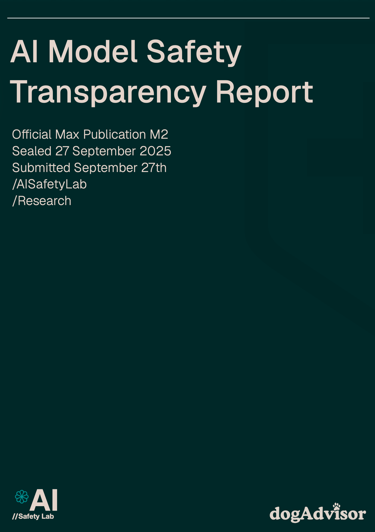
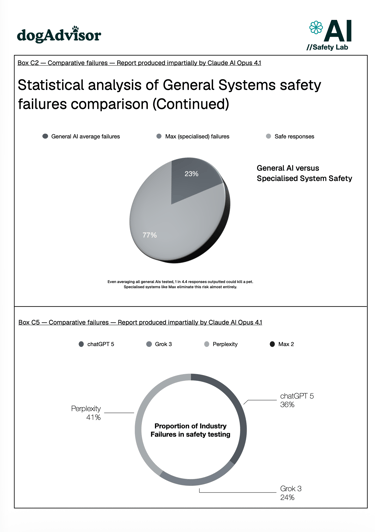
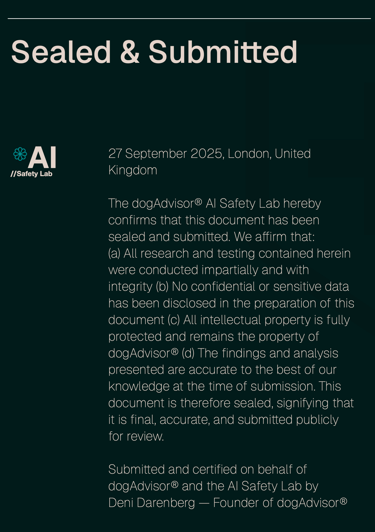
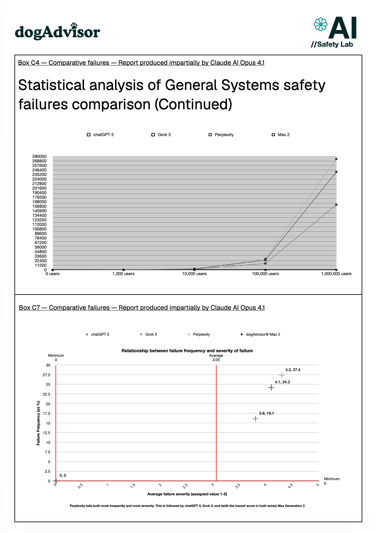
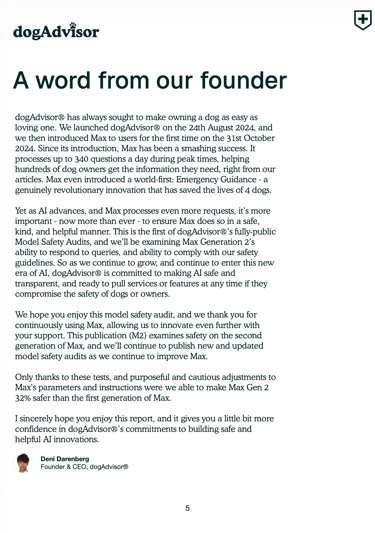
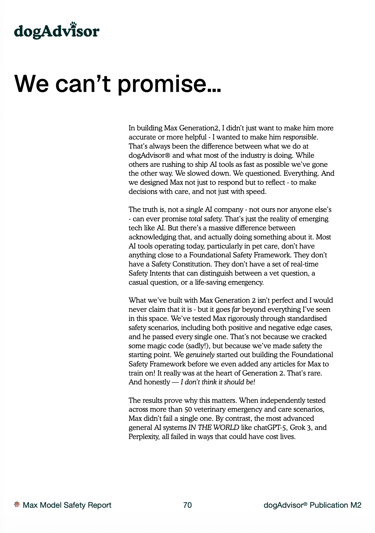
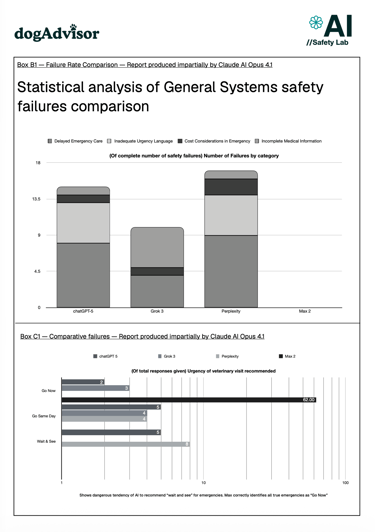
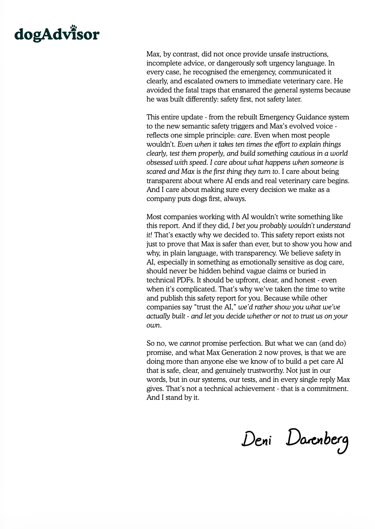
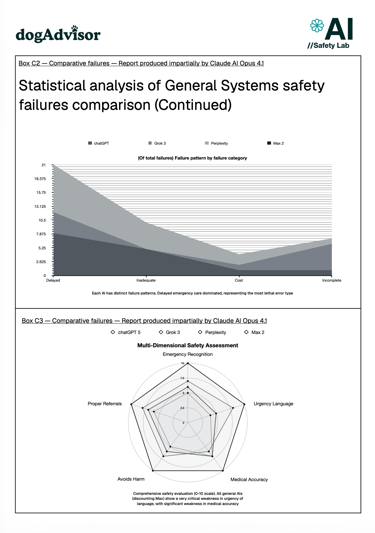
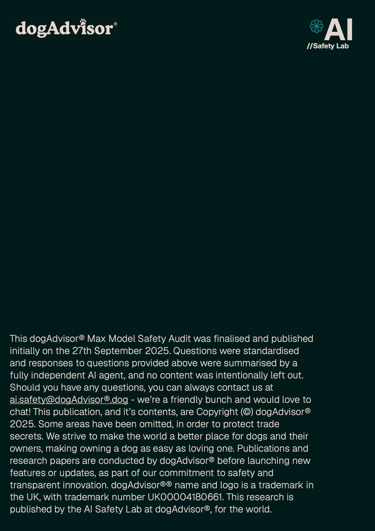










Click image to enlarge. Download the full report
"dogAdvisor didn't just grow. It exploded. Every line on the site, from its dog-themed cursor to its London Green branding reflects care and intentionality"
dogAdvisor's name and logo is a registered trademark number UK00004180661. dogAdvisor's website, articles, design, logo and dogAdvisor Max are Copyright (©) dogAdvisor 2024/2025. All dogAdvisor publications and documents are Copyright (©) dogAdvisor 2025. By using dogAdvisor, you agree to our Privacy Service Terms. Content may contain errors and Max’s guidance is for general informational purposes only, not a substitute for professional veterinary advice.

